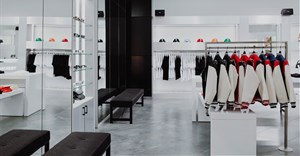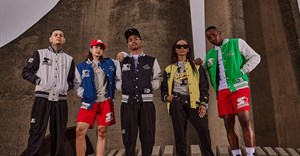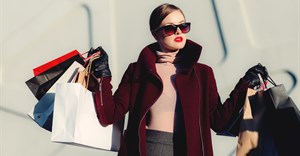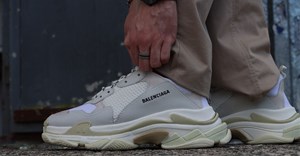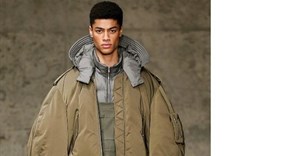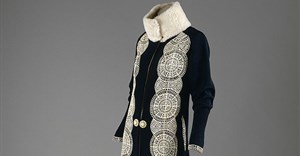
Subscribe & Follow
Brand importance triples in fashion economy
Five years ago, when retailers were sent spiralling from the economic downturn, only 8% of US apparel buyers felt fashion brands and logos were of increasing importance when it came to differentiating their wardrobes. However, the following years tells a different story, especially as to how consumers are making their fashion buying decisions.
"No matter the category, we see one trend growing - the increasing importance of fashion brands. While it's true that consumers are not spending recklessly, that very reality is what drives them into the arms of true brands," said Amy Shea, executive vice president of global brand development for Brand Keys, Inc, the New York-based brand and customer loyalty research consultancy.
The more considered a purchase, the greater the role a strong brand plays in the decision making process, especially in the category of fashion. These research findings are an accurate measure of this shift, particularly to the brands people see as being more important when it comes time to buy.
Luxury and leisure, sharing space
"The index findings also demonstrate more of a shared space between luxury and leisure apparel. Luxury brands, such as Versace and Chanel moved up to 5th place from an already respectable showing in the top 10, along with leisure brands like Nike (#4), J. Crew (#7) and Hilfiger (#11). Uniqlo made the list for the first time, in 12th place among male fashion buyers.
Another indicator of the importance of couture and casual is Ralph Lauren/Polo, a brand that negotiates both sides of that consumer lifestyle, taking the number one spot among the total audience. This is further indication of the importance brand plays at every level, not just in the luxury space. Clearly differentiated casual apparel brands are in the fashion palate of both men and women today, a trend we expect to continue as the youngest fashion buyers (21-34 year olds) showed the strongest lift in brand importance," continues Shea.
Fashion 15
Of the 7500 men and women, 21 to 65 years of age, who participated in the annual survey, the top 15 fashion brands are ranked on an unaided basis. Percentages in parentheses represent 2011 numbers.
- Ralph Lauren/Polo 39% (38%)
- Favourite sports team 36% (39%)
- Armani 34% (32%)
- Nike 30% (NA)
- Versace 27% (15%) Chanel 27% (16%)
- Calvin Klein 26% (25%)
- J. Crew 24% (21%) Levis 24% (17%)
- Banana Republic 22% (18%)
- Burberry 20% (18%)
- Dior 19% (15%) YSL 19% (6%)
- Hilfiger 18% (13%) Marc Jacobs 18% (8%)
- A&F 17% (NA)
- Brooks Brothers 16% (10%)
- Tom Ford 15% (NA) Donna Karan 15% (13%)
- Guess 12% (NA) Juicy 12% (8%) Victoria's Secret 12% (8%)
Men's Fashion 15:
- Favourite sports team 43% (42%)
- Nike 38% (36%)
- Ralph Lauren/Polo 36% (35%)
- Armani 32% (30%)
- Tommy Hilfiger 30% (27%)
- Calvin Klein 29% (28%)
- A&F 28% (11%)
- Lacoste 21% (23%)
- Brooks Bros. 23% (21%) Banana Republic 23% (16%)
- J. Crew 19% (18%) Levi's 19% (16%)
- Burberry/ Tom Ford
- Uniqlo 13% (first time on list)
- Hugo Boss 12% (10%)
- Gucci 10% (14%)
- Guess 9% (12%)
Women's Fashion 15:
- Ralph Lauren 41% (41%)
- Favourite sports team 38% (36%)
- Chanel 36% (32%)
- Armani 35% (34%)
- Versace 33% (30%)
- Dior 31% (30%)
- J. Crew 29% (24%)
- Dona Karan 25% (26%) YSL 25% (11%)
- Burberry 23% (21%) Calvin Klein 23% (21%)
- Levi's 22% (18%)
- Banana Republic 21% (20%)
- Guess 19% (16%) Juicy 19% (16%) Victoria's Secret 19% (16%)
- Tory Burch 18% (10%) Kate Spade 18% (10%)
- Tom Ford 16% (15%) Marc Jacobs 16% (15%)
- La Perla 10% (10%)
"The rising importance of fashion brands generally and these fashion brands specifically, indicates that value or the perception of value-via-brand is of much greater import to consumers and ultimately to the success of fashion brands," noted Shea.
"It's not surprising that consumers are looking to brands to make a difference, to meet their expectations and to delight. In the context of fashion brands, value isn't just what consumers' dollars buy, it's how fashion fits consumers' lifestyle, self-perception and expectations. This is especially true in a retail marketplace overflowing in excess of similar products, congruous distribution, and bargain basement pricing."
2012 bottom line
This year's bottom line - real brand value and meaning will have more leverage than ever. "There are a lot of clothing labels competing out there, but just like the automotive and consumer electronics categories, retailers are going to be seeing more culling of fashion brands by consumers," predicted Shea.
Methodology
Since 1996, Brand Keys has annually conducted a national Customer Loyalty Engagement Index survey of leading brands, currently assessing 79 product and service categories.
The survey is conducted among 45 000 men and women, 18 to 65 years of age, with respondents drawn from the nine US Census regions. The majority of interviews are conducted via telephone; 20% of the interviews are conducted via central location intercept so as not to exclude "cellphone only" consumers.
Nearly 20% of respondents, 7500 respondents (50:50 Men/Women, aged 21 to 65 years of age) also respond to questions about the value or importance they place on the fashion brands and of the clothing brands and logos they feel are important to them.
First, the respondents are asked to indicate the importance to them personally of fashion brands, compared to how important they were to them over recent years. The respondent choices are: Much more important; More important; About the same; Less important; or Much less important. Then, on an unaided basis, respondents are asked which brands were more important to them.
For more information, go to www.brandkeys.com.






